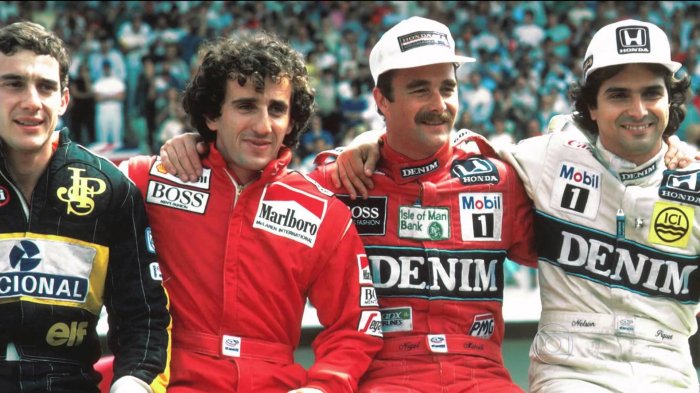Inside The Hells Angels: A Look At Their Culture And Operations

Table of Contents
The History and Evolution of the Hells Angels
The Hells Angels Motorcycle Club's origins trace back to 1948 in San Bernardino, California. Initially a loosely organized group of veterans and motorcycle enthusiasts, their early years were characterized by a rebellious spirit and a rejection of mainstream society. This anti-establishment stance would become a defining feature of their identity.
Key milestones in their history include:
- Rapid Expansion: The club rapidly expanded throughout the United States and eventually internationally, establishing chapters across the globe.
- Conflicts and Rivalries: The Hells Angels have been involved in numerous violent conflicts with rival motorcycle gangs, contributing to their reputation for aggression.
- Legal Battles: The club has faced countless legal battles, often involving charges related to drug trafficking, violence, and organized crime. These legal challenges have shaped their public image and operational strategies.
The evolution of their image has been dramatic. Initially, they were largely seen as a biker gang, but over time their public perception shifted towards a more sinister image linked to criminal activities. Key historical figures, such as Sonny Barger, have significantly influenced the club's trajectory and image.
- Sonny Barger: A prominent figure who helped shape the Hells Angels' structure and image.
- Other Key Figures: Several other influential members shaped the club's history through their leadership and actions, each leaving their mark on the organization.
The Structure and Hierarchy of the Hells Angels MC
The Hells Angels operate under a hierarchical structure, with chapters forming the foundational units. These chapters are further organized under larger mother chapters, creating a complex network of control and communication.
- Chapter Structure: Individual chapters function semi-autonomously but ultimately answer to the larger club structure.
- Leadership Roles: The club has clearly defined roles, including the President, Vice President, Sergeant-at-Arms, and other officers, each with specific responsibilities.
- Club Insignia ("Patches"): The significance of patches, including the iconic "death head" emblem, cannot be overstated. These symbols denote membership, rank, and chapter affiliation within the Hells Angels hierarchy. They are a powerful visual representation of their identity and hierarchy.
The initiation process into the Hells Angels is rigorous and secretive, demanding a significant commitment and adherence to the club's strict code. Prospective members typically go through a lengthy probationary period before being fully patched-in.
- Probationary Period: A lengthy period of testing and proving loyalty and commitment.
- Requirements: Stringent requirements and expectations are placed on members, ensuring loyalty and adherence to the club's rules.
The Culture and Values of the Hells Angels
The Hells Angels' culture is defined by a complex interplay of brotherhood, loyalty, rebellion, and a strong biker identity. The motorcycle is central to their identity, representing freedom, rebellion, and camaraderie. The infamous "1%er" patch symbolizes their rejection of mainstream society and their embrace of a lifestyle outside the law.
- Brotherhood and Loyalty: A strong emphasis on brotherhood and loyalty defines the club's internal dynamics.
- Rebellion and Anti-Establishment Sentiment: A deep-seated rejection of mainstream values and institutions.
- The "1%er" Patch: A symbol of defiance and rebellion against societal norms.
While the Hells Angels often present a public image of aggression and lawlessness, it is essential to distinguish between the realities of their lifestyle and the common misconceptions surrounding the club.
- Misconceptions vs. Realities: Separating fact from fiction is crucial for a balanced understanding.
Hells Angels' Operations and Activities
While the Hells Angels have engaged in legitimate business ventures in some instances, allegations of criminal activities, including drug trafficking, extortion, and violence, persistently surround the organization. Law enforcement agencies worldwide actively monitor and investigate the club's activities, employing various strategies to combat their alleged criminal operations.
- Legitimate Businesses (if any): Few documented instances of legitimate business operations exist.
- Alleged Criminal Activities: Numerous allegations of involvement in various criminal activities remain a significant aspect of the club's reputation.
- Law Enforcement Strategies: The challenges law enforcement faces in dealing with the Hells Angels, considering their structure and secrecy.
Past and present legal cases against the Hells Angels highlight the ongoing struggle between law enforcement and the organization. The ethical considerations of reporting on such a controversial group are paramount, demanding a commitment to accuracy, fairness, and responsible journalism.
- Notable Legal Cases: A summary of significant legal battles involving the Hells Angels.
- Ethical Considerations: The importance of responsible and balanced reporting when dealing with such a sensitive topic.
Conclusion: Understanding the Complex Reality of the Hells Angels Motorcycle Club
The Hells Angels Motorcycle Club presents a multifaceted and complex reality, far beyond the simplistic narratives often presented. Their history, hierarchical structure, cultural values, and alleged criminal activities all contribute to a picture that requires careful consideration and nuanced understanding. By exploring these various facets, we can gain a more comprehensive appreciation of the Hells Angels Motorcycle Club's enduring influence and impact. Further research into the Hells Angels Motorcycle Club, utilizing reliable sources and responsible reporting, is crucial for developing a complete understanding of this organization. We encourage readers to explore credible books, documentaries, and academic articles to broaden their knowledge and contribute to more informed discussions surrounding this controversial topic.

Featured Posts
-
 Live Streaming Sprint Race Moto Gp Inggris Pukul 20 00 Wib Jangan Lewatkan
May 26, 2025
Live Streaming Sprint Race Moto Gp Inggris Pukul 20 00 Wib Jangan Lewatkan
May 26, 2025 -
 Thursday Night Viewing Your Top 10 Tv And Streaming Recommendations
May 26, 2025
Thursday Night Viewing Your Top 10 Tv And Streaming Recommendations
May 26, 2025 -
 Worlds Largest Rubber Ducks Myrtle Beach Visit A Message Of Environmental Awareness
May 26, 2025
Worlds Largest Rubber Ducks Myrtle Beach Visit A Message Of Environmental Awareness
May 26, 2025 -
 Review Salon Yevani Restaurant Herzliya
May 26, 2025
Review Salon Yevani Restaurant Herzliya
May 26, 2025 -
 Moto Gp Di Brasil Goiania Dan Sirkuit Ayrton Senna Siap Membara
May 26, 2025
Moto Gp Di Brasil Goiania Dan Sirkuit Ayrton Senna Siap Membara
May 26, 2025
